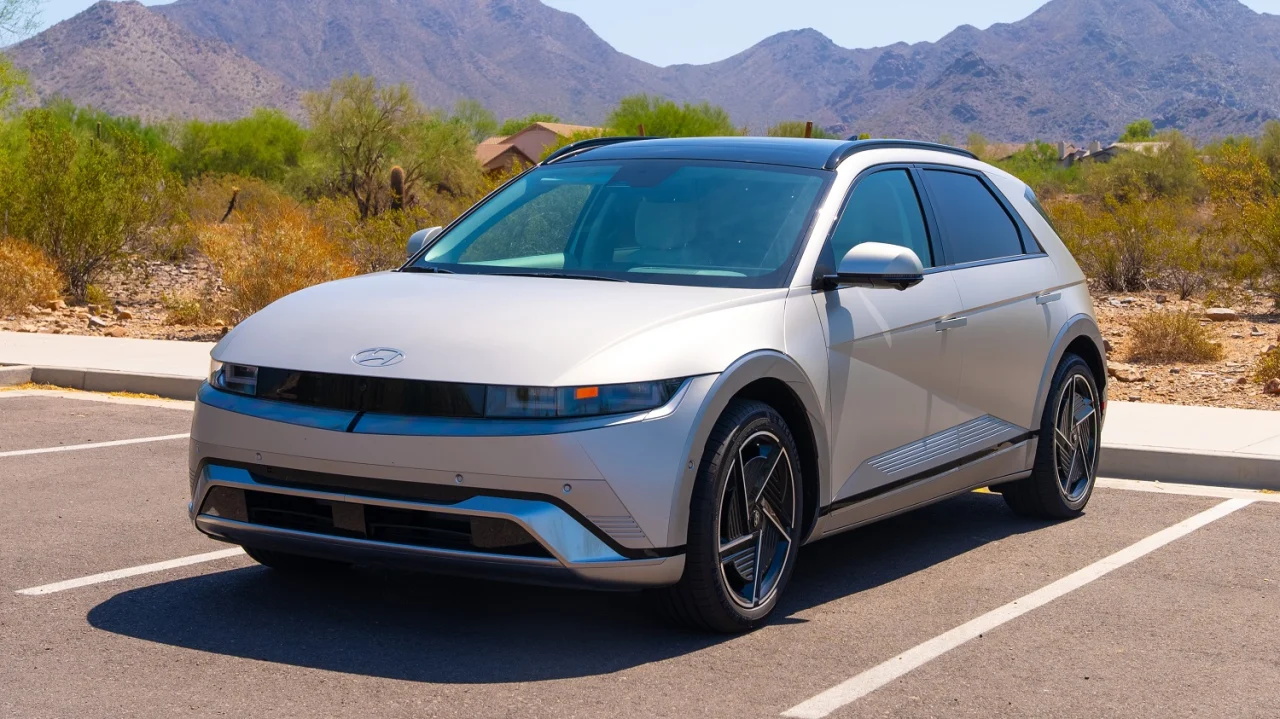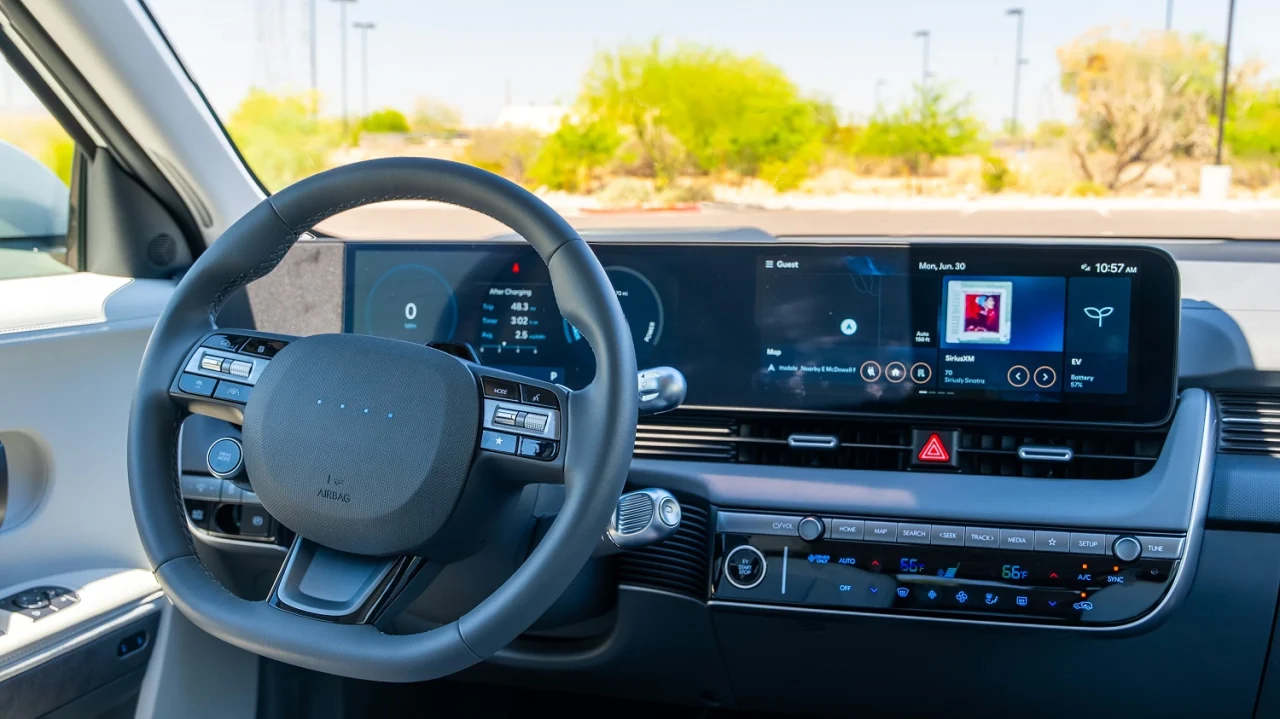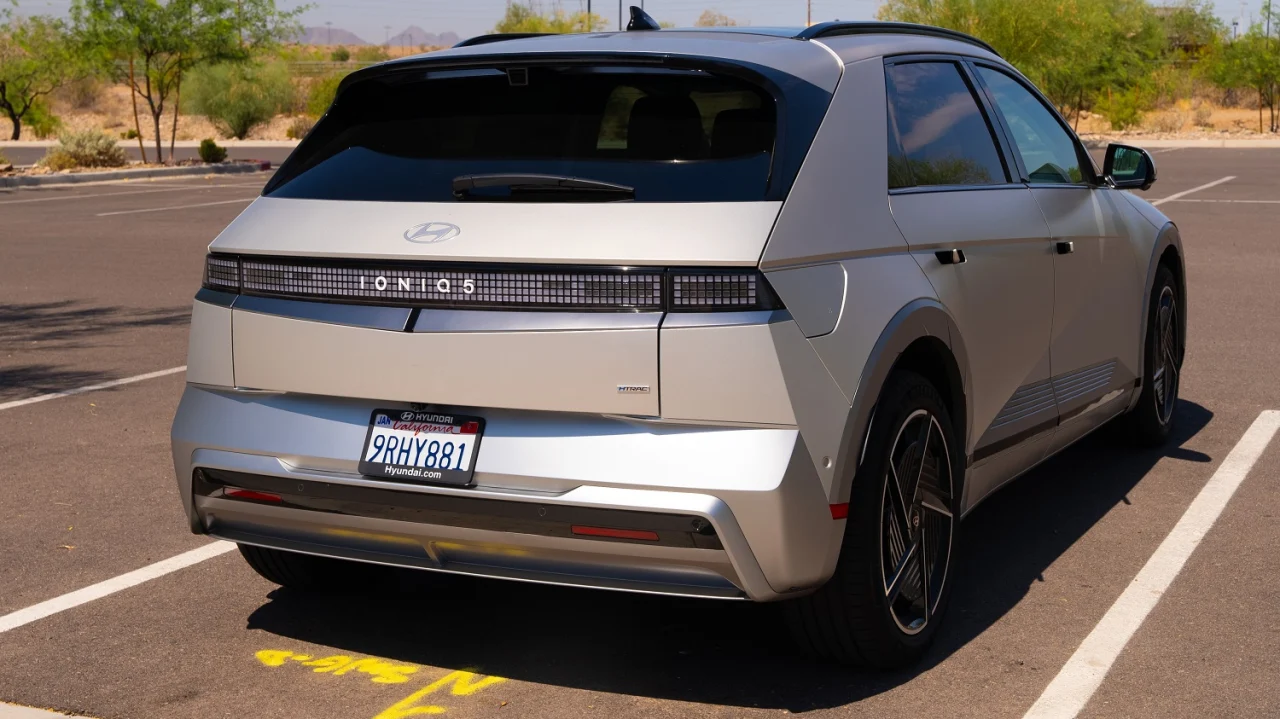Three years ago, I spent a week driving the all-electric 2022 Hyundai Ioniq 5. It was a daring retro-futuristic design wrapped around an airy, spacious cabin and propelled by a powerful pair of electric motors. To make a long story short, I loved it. Would the thoroughly updated 2025 model be just as wonderful? There was only one way to find out.
Prices for the 2025 Ioniq 5 start at $42,600 for the entry-level SE Standard Range model and top out at $54,300 for the Limited with rear-wheel drive. My dual-motor Limited test vehicle came standard with HTRAC all-wheel drive, a V-shaped LED accent bar, 20-inch wheels, a large fixed glass roof panel with a retractable shade, a head-up display, heated and ventilated front seats, Bose audio, a 12.3-inch digital instrument cluster, a 12.3-inch infotainment touchscreen, and more. Adding carpeted floor mats and the $1,000 Gravity Gold Matte paint raised the total price to $60,785.

As part of the Ioniq 5’s mid-cycle refresh, Hyundai made comprehensive visual, technological, and powertrain changes. The immediately recognizable 8-bit exterior was not only updated with new bumpers, a rear wiper and washer, and fresh paint colors, but with structural enhancements to the doors, B-pillars, and body as well. Luckily, none of those alterations were too extreme – the Ioniq 5 is still as quirky and distinctive as before.

The cabin comes with new features that make it more convenient. In properly equipped models such as my Limited AWD test vehicle, the sliding center console now has a wireless phone charging pad as well as physical controls for the heated and ventilated front seats and the redesigned heated steering wheel. Too bad Hyundai didn’t use buttons and switches for the new HVAC controls, which are touch-sensitive and difficult to use on the fly.
Two of the most significant updates to the Ioniq 5 are the switch to higher-capacity lithium-ion battery packs and the standard NACS (North American Charging Standard) charging port, which enables the Ioniq 5 to use Tesla Supercharger stations. The Limited AWD has a 74-kW front and a 165-kW rear electric motor, which produce a total of 320 horsepower and 446 lb-ft of torque. According to the EPA, it’s capable of returning 98 MPGe combined. On a full charge, the Limited AWD can cover 269 miles, a slight increase from its previous range of 260. When connected to 250+kW power, the battery goes from 10 to 80 percent full in 20 minutes. Unfortunately, the Electrify America station closest to my house was much slower, taking the battery from 10 to 80 percent in 53 minutes. Let’s just say I spent a lot of time browsing the nearby Walmart’s Hot Wheels and Lego aisles that afternoon.

On the road, the Ioniq 5’s cabin was just as soothing and airy as it was in the 2022 model. Although the suspension had a touch of firmness, it didn’t detract from the serene driving experience. When I needed to pick up the pace, the dual motors carried me forward at a brisk pace. I quickly realized that when Hyundai developed the new Ioniq 5, it didn’t “fix” something that wasn’t broken in the first place.
To learn more about the 2025 Hyundai Ioniq 5 Limited AWD, check out my review video below.

